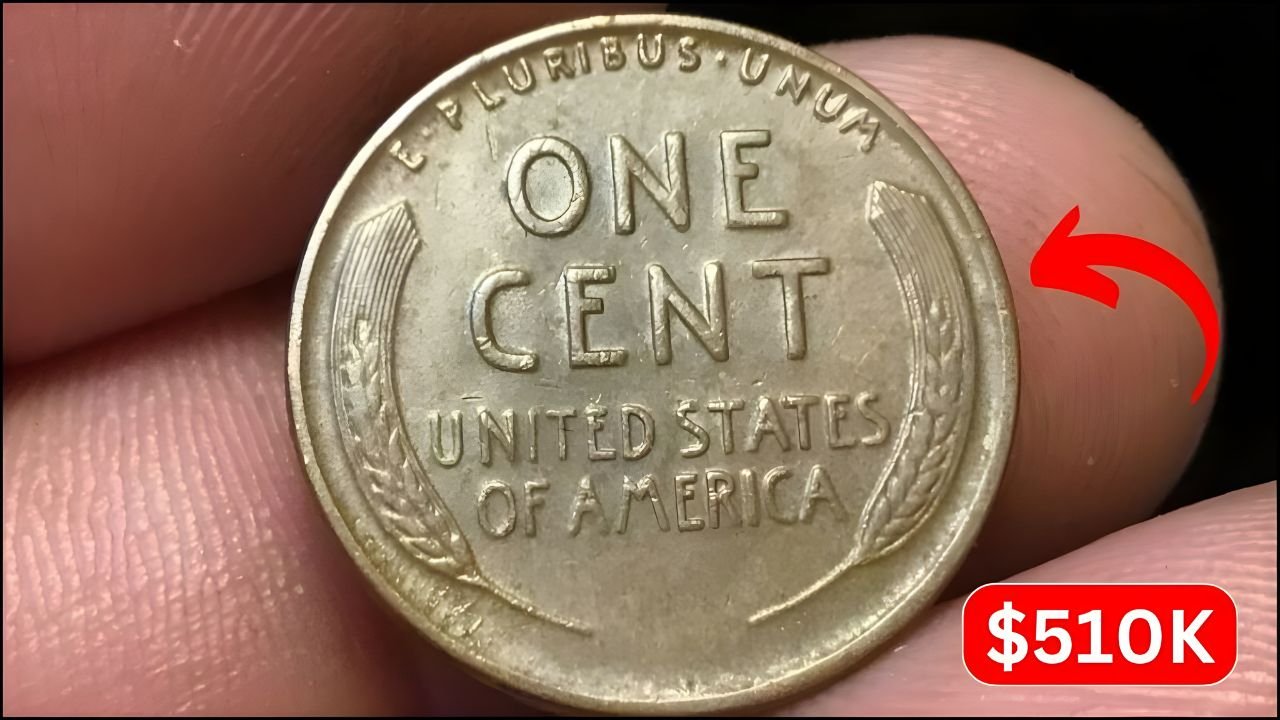The humble Lincoln Wheat Penny, a coin most Americans have seen countless times, has recently made headlines — one rare variety has been valued at an incredible $510,000. While millions of these pennies were minted between 1909 and 1958, only a few possess the unique characteristics that make them worth a small fortune today. Shockingly, some of these valuable coins might still be circulating in everyday pocket change.
A Brief History of the Lincoln Wheat Penny
The Lincoln Wheat Penny, designed by Victor David Brenner, was first issued in 1909 to commemorate the 100th birthday of President Abraham Lincoln. It was the first U.S. coin to feature a real person and quickly became one of the most iconic coins in American history. The reverse design, with its two wheat stalks and the words “ONE CENT,” gave the coin its popular nickname — the Wheat Penny.
The $510,000 Penny — What Makes It So Special?
The penny valued at $510,000 is not an ordinary Wheat Cent. Its extraordinary worth comes from rare minting errors, limited production, and perfect condition. Among the most prized examples are:
-
1943 Bronze Cent: In 1943, most pennies were made of steel coated with zinc due to wartime metal shortages. However, a few were accidentally struck on leftover bronze planchets from 1942. These rare coins have fetched hundreds of thousands of dollars at auction.
-
1955 Double Die Obverse: Known for its strong doubled lettering on “LIBERTY” and “IN GOD WE TRUST,” this error is one of the most famous in numismatic history.
-
1922 No D Mint Mark: Produced in Denver, this coin lacks its mint mark due to a filled die error, making it another collector’s favorite.
A well-preserved or uncirculated example of one of these rare Wheat Pennies can easily cross the $500,000 mark, depending on its condition and rarity.
How to Identify a Valuable Wheat Penny
If you come across a Lincoln Wheat Penny, take a closer look — it might be more valuable than you think. Here’s what to check:
-
Date and Mint Mark: Look closely for the year and location (D for Denver, S for San Francisco, or no mark for Philadelphia).
-
Errors and Oddities: Doubled lettering, missing mint marks, or off-center strikes often indicate a rare minting error.
-
Material: The 1943 bronze cent is magnetic test–proof — if it doesn’t stick to a magnet, it could be a rare find.
-
Condition: Coins with minimal wear, especially those graded MS-65 or higher, command the highest prices.
Still in Circulation — A Hidden Treasure
Despite their age, many Wheat Pennies are still found in jars, drawers, and even in circulation today. Thousands of people have stumbled upon valuable specimens in loose change without realizing their true worth. It’s a modern-day treasure hunt that could turn a single cent into hundreds of thousands of dollars.
Final Thoughts
The Lincoln Wheat Penny isn’t just a piece of copper — it’s a piece of American history and a symbol of enduring value. While most are worth only a penny, the rare ones could make you half a million dollars richer. So, before you spend that old coin, take a moment to check it. You might just be holding a $510,000 fortune in your hand.
FAQ The Lincoln Wheat Penny Valued at $510K
Q: Are all Lincoln Wheat Pennies valuable?
No. Most are worth only a few cents, but rare dates or mint errors can make some worth thousands — even hundreds of thousands.
Q: What year Wheat Penny is worth the most?
The 1943 bronze and 1955 double die Wheat Pennies are among the most valuable.
Q: Where can I sell a rare Wheat Penny?
You can consult professional coin dealers, visit coin shows, or submit your coin to a grading service like PCGS or NGC.
Q: Should I clean my Wheat Penny before selling it?
Never. Cleaning can permanently reduce a coin’s value.





